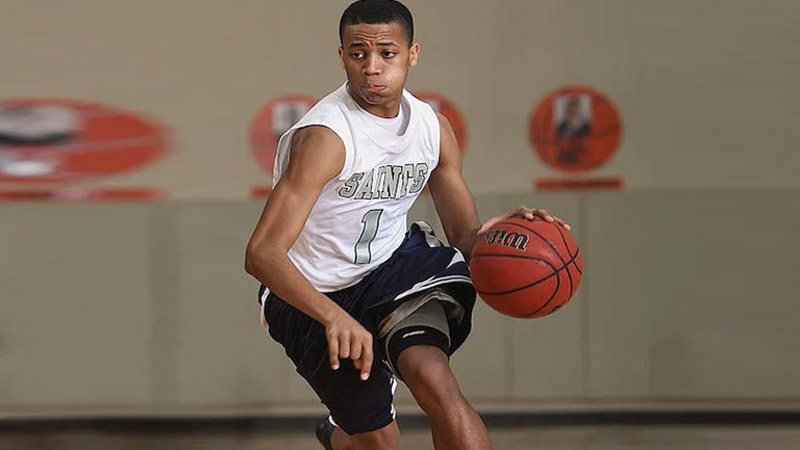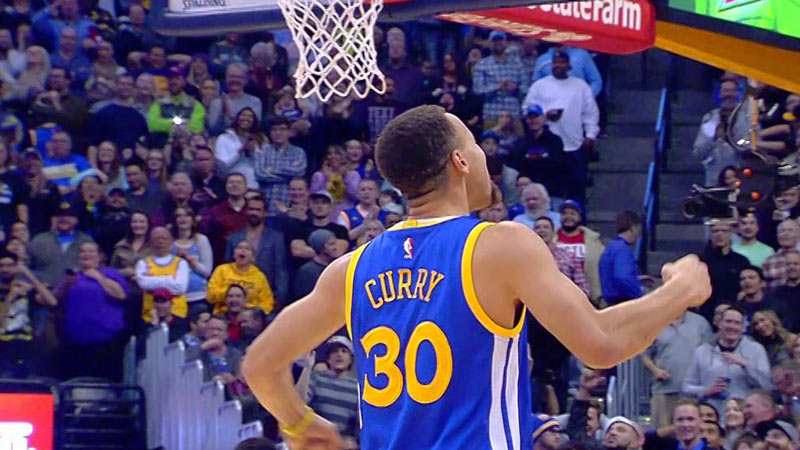Basketball, a dynamic and exhilarating sport, is known for its fast-paced gameplay and strategic maneuvers. One key aspect that sets basketball apart is the concept of a fast break. But what is a fast break in basketball?
This article explores the definition and importance of this fundamental tactic in the game. A fast break occurs when a team rapidly transitions from defense to offense, taking advantage of a quick turnover or defensive rebound to launch a swift and coordinated attack toward the opposing basket.
It is a strategic move that requires speed, precision, and teamwork. In this article, we will explore the intricacies of executing a successful fast break, its impact on the outcome of games, and the various strategies teams employ to capitalize on this fast and furious style of play.
By understanding the nuances of the fast break, basketball enthusiasts can gain a deeper appreciation for the game and the strategies that shape its thrilling moments.
What Is A Fast Break In Basketball?
The fast break is a crucial element in basketball, characterized by its quick and aggressive nature. Understanding its fundamentals is essential for players and teams seeking an edge on the court.
This section will provide an in-depth exploration of the basics of a fast break, including its definition, key objectives, advantages, and the crucial factors of pace, timing, and teamwork required for its successful execution.
Definition Of A Fast Break
A fast break refers to the swift transition from defense to offense immediately after gaining possession of the basketball. It involves moving the ball up the court quickly and precisely, often bypassing the opposing team’s defense to create scoring opportunities.
Key Objectives And Advantages Of Utilizing A Fast Break
The primary objective of a fast break is to capitalize on the element of surprise and catch the defense off guard. By pushing the ball up the court rapidly, the offense aims to create numerical advantages, exploit mismatches, and generate high-percentage scoring opportunities.
Additionally, a successful fast break can disrupt the opponent’s defensive setup, forcing them into a reactive mode and preventing them from establishing a solid defensive presence.
Role Of Pace, Timing, And Teamwork In Executing A Successful Fast Break

Pace is a critical component of a fast break. The offense must push the ball up the court quickly to prevent the defense from setting up and to keep the pressure on.
Timing is also crucial, as players must read the situation and make split-second decisions on when to pass, shoot, or drive to the basket.
Lastly, teamwork plays a significant role, as players must communicate effectively, anticipate each other’s movements, and make intelligent decisions to maintain the flow and coordination required for a successful fast break.
Mastering the basics of a fast break provides teams with a potent offensive weapon that can catch opponents off guard, create scoring opportunities, and energize the entire team.
Transitioning From Defense To Offense
Transitioning from defense to offense is critical to executing a successful fast break in basketball. This phase of the game involves seizing opportunities created by defensive rebounds or intercepting passes to initiate an offensive attack quickly.
Efficiently triggering the fast break requires precise execution and strategic decision-making, as teams aim to capitalize on defensive disorganization and create scoring opportunities.
Triggering The Fast Break From Defensive Rebounds
Importance Of Quick Outlet Passes:
When securing a defensive rebound, players must immediately look to make accurate and swift outlet passes to initiate the fast break. This enables the offensive players to start their sprint down the court while catching the defense off-guard.
Quick outlet passes help maintain the flow and tempo of the fast break, preventing the opposing team from setting up their defense.
Exploiting Defensive Disorganization During Transition:
During the transition phase, defensive players often find themselves out of position or struggling to regroup. Teams executing a fast break can exploit this disorganization by pushing the pace, attacking the basket, or finding open teammates for high-percentage scoring opportunities.
Recognizing and capitalizing on defensive disarray is crucial for a successful fast break.
Intercepting Passes And Creating Turnovers For Fast Break Opportunities
Defensive Strategies For Forcing Turnovers:
Teams employ various defensive techniques to generate fast break opportunities. This may include aggressive ball denial, trapping, or deflecting passes to disrupt the opponent’s offensive flow.
By applying pressure and forcing turnovers, teams can gain possession and transition quickly from defense to offense, catching the opposing team off-guard.
Transitioning From A Defensive Stance To An Offensive Attack:
When a turnover or intercepted pass occurs, players must swiftly transition from their defensive stance to launch a coordinated vicious attack.
This requires a rapid shift in mindset and positioning, as players must immediately become the initiators of the fast break, pushing the ball up the court and exploiting the defensive vulnerabilities of their opponents.
Player Roles And Positions In The Fast Break

In the fast-paced basketball world, player roles and positions are crucial in executing a successful fast break. Each player on the court has specific responsibilities and tasks that contribute to the effectiveness of this rapid transition.
Understanding these roles and positions is essential for teams that capitalize on fast break opportunities.
Point Guard Responsibilities In Leading The Fast Break:
The point guard is often the orchestrator of the fast break, responsible for making quick decisions and displaying excellent court vision.
Their ability to read the defense and make split-second choices is vital in pushing the ball up the court with a dribble or finding an open teammate with a pass.
Wings And Forwards In The Fast Break:
Wings and forwards play a critical role in the fast break by running the lanes and spacing the floor. By sprinting to their designated spots, they create opportunities for scoring or assisting in the transition.
Their positioning allows for optimal floor balance and provides passing options for the point guard, ensuring a smooth and efficient attack.
Trailing Big Man And Trailer Options In The Fast Break:
The trailing big man, often a center or power forward, provides support and additional scoring options in the fast break. They trail behind the play, offering a safety valve for a pass or the ability to exploit mismatches in the defense.
Utilizing trailers in the fast break opens up secondary break opportunities, forcing the reason to adapt and increasing the team’s scoring potential.
Strategies And Techniques For A Successful Fast Break
Fast breaks in basketball require a combination of physical prowess, effective communication, and strategic decision-making. This section explores critical strategies and techniques contributing to a successful fast break.
Speed And Conditioning For Effective Transition Play
Players need to possess exceptional speed and conditioning to execute a fast break successfully. This subsection focuses on the physical and mental preparation required for quick breaks and maintaining the desired pace throughout the game.
It emphasizes the importance of rigorous stamina and endurance training, allowing players to sustain their speed and performance even during extended periods of play.
Communication And Coordination Among Teammates
Effective communication and seamless coordination among teammates are essential for a smooth transition during a fast break.
This subsection delves into the significance of verbal and non-verbal cues, enabling players to anticipate each other’s movements and make split-second decisions.
It emphasizes the importance of developing strong chemistry and trust and the ability to react quickly to teammates’ actions.
Analyzing And Exploiting Defensive Weaknesses During Transition
Triumphant fast breaks also involve identifying and capitalizing on defensive weaknesses. This subsection highlights the importance of analyzing the opposing team’s defensive structure during transition plays.
It emphasizes the significance of identifying and exploiting mismatches to gain an advantage. Additionally, it explores the role of reading and reacting to defensive rotations, allowing players to make informed decisions and adapt their offensive strategies accordingly.
Notable Fast Break Systems And Examples

Fast break systems have played a significant role in shaping the history and evolution of basketball. This section explores some notable examples, both from the past and the present, highlighting the offensive principles, strategies, and impact of these teams on the game.
The Showtime Lakers: A Historical Example Of A Fast Break-Oriented Team
The Showtime Lakers, led by Magic Johnson and Kareem Abdul-Jabbar, revolutionized the concept of a fast break in the 1980s. With their incredible speed, precision passing, and seamless teamwork, the Lakers became synonymous with fast-break basketball.
Offensive Principles And Strategies Used By The Lakers
The Lakers employed a fast-paced style of play, focusing on quick outlet passes, rapid ball movement, and constant movement without the ball. Their primary objective was to exploit defensive vulnerabilities and score easy baskets in transition before the opposing defense could set up.
Impact And Influence Of The Showtime Lakers On Modern Basketball
The Showtime Lakers’ fast break system set new standards for basketball’s speed, excitement, and entertainment value. Their style inspired future generations of players and teams, emphasizing the importance of pace, spacing, and unselfishness in offensive execution.
Modern NBA Teams With Practical, Fast Break Systems
In today’s NBA, several teams have embraced fast-break basketball as a primary offensive weapon, leveraging the speed, athleticism, and strategic execution to gain a competitive edge.
Analysis Of Teams Utilizing Fast Breaks As A Primary Offensive Weapon
This section analyzes contemporary NBA teams that have mastered the art of the fast break, examining their roster composition, coaching philosophies, and specific strategies employed to capitalize on transition opportunities.
Examining Successful Fast Break Plays And Strategies
This subsection dissects notable fast break plays and strategies modern NBA teams employ, highlighting their effectiveness and the tactical nuances involved in executing successful fast break sequences.
Frequently Asked Questions
Can any team execute a fast break, or is it only for highly athletic players?
While athleticism can enhance a team’s fast break, any team can implement this strategy with proper execution, teamwork, and understanding of the principles involved. Intelligent decision-making and precise passing are equally crucial.
What are the risks of attempting a fast break?
If improperly executed, fast breaks involve risks, such as turnovers and defensive vulnerabilities. However, the potential rewards of scoring quick points and disrupting the opposition’s defense often outweigh the risks.
Do all players participate in a fast break?
Ideally, all players should be involved in a fast break, with designated roles and positions. However, certain players, such as guards or wing players, often take on primary roles due to their ball-handling skills and ability to create scoring opportunities.
How can a defense counter a fast break?
Defending against a fast break requires quick transition and communication. Players must sprint back on defense, identify their assignments, and communicate to cover open players. Slowing down the opposing team’s primary ball handler and clogging passing lanes can disrupt the fast break.
Are there any famous fast-break teams in basketball history?
Several teams have been renowned for their exceptional fast-break abilities throughout basketball history. The “Showtime” Lakers of the 1980s, led by Magic Johnson, and the Golden State Warriors during their championship-winning seasons are notable examples.
Conclusion
The fast break is a thrilling aspect of basketball that showcases a team’s speed, skill, and teamwork. By understanding its principles, executing effective strategies, and making quick decisions, teams can capitalize on fast-break opportunities to gain a competitive advantage.
While it requires practice and coordination, the fast break can be a potent weapon that keeps opponents on their toes, ultimately leading to more scoring opportunities and increased chances of victory.







